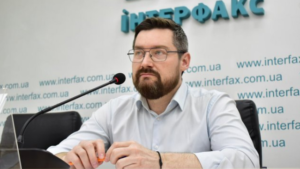
The Asian Development Bank (ADB) has lowered its economic growth forecast for developing countries in the Asia-Pacific region in 2025 to 4.7% from the 4.9% expected in April.
The GDP growth estimate for next year has been lowered to 4.6% from 4.7%.
“The downward revision reflects expectations of weaker exports amid higher US import tariffs and global trade uncertainty, as well as weaker domestic demand,” the ADB said in a report.
The outlook for the Asia-Pacific region could be further undermined by escalating US tariffs and trade tensions, experts say. Other risks include conflicts and geopolitical tensions that could disrupt global supply chains and lead to higher energy prices, as well as a more serious than expected deterioration in China’s real estate market.
“The economic outlook has deteriorated amid rising risks and global uncertainty,” said Albert Park, chief economist at the ADB. “Economies in the region should continue to strengthen their fundamentals and promote open trade and regional integration to support investment, employment, and growth.”
Inflation in developing Asia-Pacific countries is projected to continue slowing amid lower oil prices and high agricultural production, which will ease pressure on food prices. The ADB forecasts inflation at 2% this year and 2.1% in 2026, compared with April estimates of 2.3% and 2.2%, respectively.
The bank’s analysts still expect China’s GDP to grow by 4.7% in 2025 and 4.3% next year. Inflation this year is expected to be 0.2% (in April it was predicted to be 0.4%), and in 2026 – 0.4% (0.7%).
South Korea’s economy will grow by 0.8% this year, while previously a 1.5% increase was expected. The growth estimate for 2026 has been lowered to 1.6% from 1.9%.
India’s GDP is forecast to grow by 6.5% this year and 6.7% next year. The previous forecast predicted growth of 6.7% and 6.8%, respectively.
The ADB still expects Indonesia’s economy to grow by 5% in 2025 and 5.1% in 2026.
The ADB was established in 1966. Its shareholders are 69 countries, 49 of which are located in the Asian region.
The bank considers 46 of these countries to be developing Asian countries.

Germany’s central bank does not expect the country’s GDP to grow in April-June 2025 after an unexpected rise in the first quarter. The economy has “probably stagnated” and the underlying trend is still characterized as “generally weak,” according to the Bundesbank’s monthly report.
The central bank warned that the introduction of 30% import duties recently announced by US President Donald Trump would create a “significant risk of economic decline.”
“In the short term, Germany’s export industry will face additional obstacles in the form of US tariff policy,” the Bundesbank said in a report.
Germany’s economy grew by 0.4% in the first quarter of 2025 compared to the previous three months. The GDP growth rate was the highest since the third quarter of 2022. However, this increase is largely due to attempts by businesses and exporters to get ahead of US duties.
Preliminary data on the dynamics of Germany’s GDP in the second quarter will be published on July 30.
Earlier, the Experts Club information and analytical center made a video analysis of the prospects for the Ukrainian and global economies, see more in the video – https://youtu.be/kQsH3lUvMKo?si=F4IOLdLuVbYmEh5P

Brazil’s Ministry of Finance has raised its GDP growth forecast for 2025, but expects the economic upturn to slow down as a result of the country’s central bank’s tight monetary policy.
The GDP growth forecast for the current year has been raised to 2.5% from the 2.4% expected in May, and for 2026 it has been lowered to 2.4% from 2.5%.
The forecasts do not take into account the consequences of Washington’s introduction of 50% tariffs on all imports from Brazil, the Ministry of Finance notes. Earlier, US President Donald Trump announced that these tariffs would take effect on August 1.
“The tariffs are unlikely to have a significant impact on GDP growth in 2025, although certain industries may suffer quite severely,” the Ministry of Finance said in a statement.
In the first quarter of this year, Brazil’s GDP increased by 1.4% compared to the previous three months, the highest in three quarters. GDP growth in annual terms was 2.9%.
Earlier, the Experts Club information and analytical center made a video analysis of the prospects for the Ukrainian and global economies. For more details, see the video at https://youtu.be/kQsH3lUvMKo?si=F4IOLdLuVbYmEh5P

Ukraine’s real gross domestic product (GDP) grew by 1.1% in May 2025 compared to the same month in 2024, according to the Monthly Economic Monitor of the Institute for Economic Research and Policy Consulting (IER).
“The State Statistics Service has begun to publish data on industry more quickly, which allows us to assess the state of the Ukrainian economy more accurately. The new data show that growth rates remain low, although certain positive signals are already emerging,” according to the results of the study published on the IER website on Thursday.
According to the IER, real gross value added (GVA) growth in the manufacturing industry accelerated to 2.4% in May compared to 2024, up from 1.4% in April after a decline in March. This indicator was supported by more stable domestic demand.
In addition, companies faced fewer problems with access to electricity in May. According to the IER’s estimates, real GVA in electricity grew by 3% year-on-year in April and 4.8% in May. The decline in the extractive industry slowed to 10.4% (compared to 2024) in May due to a slight recovery in gas production and an increase in the extraction of construction raw materials.
According to the State Statistics Service, retail trade turnover grew by 4.8% in the first quarter. Data on wholesale trade has not yet been released, but the IER assumes that it continued to decline slightly due to the ongoing transition to direct sales and reduced use of warehouses due to shelling by the Russian army. Therefore, real GDP growth in trade in April and May is estimated at 2% year-on-year, although wages continue to rise rapidly.
Real GVA in agriculture declined by 2.4% year-on-year in May, which is close to April’s figures. This reflects a decline in livestock production by households, which was not offset by a slight increase in production by enterprises.
The IER estimates that real GVA in transport declined by 6.4% in May compared to the previous year. The slowdown in rail freight transport continued, and the impact of the suspension of gas transit persisted, although growth was observed in other transport sub-sectors.
In the first five months of 2025, Ukrzaliznytsia transported 22.2 million tons of cargo to ports. In particular, 12.7 million tons of grain were transported, of which 11.4 million tons were for export (to ports and the western border). This figure is 30% lower than in January-May 2024.
“The decline in rail transport reflects a seasonal trend in lower grain sales in anticipation of the new harvest,” the IER explains.
In addition, electricity imports rose by 3.6% in May compared to April, to 198,000 MWh. Most of the electricity was supplied from Hungary (40%). Electricity exports in May fell by 41% compared to April, to 93,000 MWh.
As for gas, the IER warns of the threat of a shortage if not all production capacities are restored after the Russian shelling. Currently, the shortage is estimated at approximately EUR 1 billion. As of mid-May, 6.14 billion cubic meters of gas had been accumulated in underground storage facilities (UGS).
As noted, the May level of UGS filling was the lowest in the last 11 years. Last month, 11.7 TWh, or more than 1.1 billion cubic meters, of gas was sent to UGS, which is 49% more than in May last year. Of this, about 500 million cubic meters came from abroad, while a year ago such inflows were close to zero.
“This indicates that the injection of Ukrainian-produced gas into storage facilities in May was not much lower than last year’s figure. The average daily injection rate in May was 376 GWh, or approximately 36 million cubic meters, and in the first 16 days of June, it rose to 463 GWh, or 45 million cubic meters,” the IER said.

This article presents key macroeconomic indicators for Ukraine and the global economy as of February 1, 2025. The analysis is based on current data from the State Statistics Service of Ukraine, the National Bank of Ukraine, the International Monetary Fund, the World Bank, and the UN. Marketing and Development Director at Interfax-Ukraine, Maksim Urakhin, PhD in Economics and founder of the Experts Club information and analytical center, presented an overview of current macroeconomic trends.
Macroeconomic indicators of Ukraine
In 2024, Ukraine’s economy showed signs of recovery despite the ongoing war and unstable geopolitical situation. According to updated data from the State Statistics Service, Ukraine’s real GDP grew by 3.3% in 2024, while nominal GDP amounted to approximately UAH 8.3 trillion. The deflator index was 11.6%.
“GDP growth demonstrates the resilience of the Ukrainian economy. Sectors focused on exports, domestic consumption, and infrastructure restoration have become the drivers of growth,” comments Maxim Urakin.
As of January 2025, annual inflation accelerated to 12.9%. Consumer prices rose by 1.2% in January compared to December, reflecting seasonal increases and currency stability.
According to the State Statistics Service, at the end of 2024, exports of goods amounted to $43.8 billion (+13.4%), imports to $67.4 billion (+5.7%), and the negative foreign trade balance to $23.6 billion.
“Despite high imports, primarily of energy and equipment, export activity is growing. Ukraine is strengthening its position in the agricultural and metallurgical markets,” says Maksim Urakyn.
As of February 1, 2025, according to the Ministry of Finance, Ukraine’s state and state-guaranteed debt amounted to $146.7 billion, including $100.1 billion in external debt. According to the National Bank of Ukraine, international reserves reached $45.3 billion, increasing by $400 million in January thanks to inflows from the EU and the IMF.
“The record level of reserves strengthens the stability of the hryvnia and allows the NBU to control currency fluctuations,” the economist emphasizes.
Global economy
According to the IMF’s January update, global economic growth in 2024 was 3.1%, with a forecast of 3.2% for 2025. Developing countries remain the main drivers, despite global instability.
According to the Bureau of Economic Analysis, the US economy grew by 2.5% in 2024. In January 2025, inflation stood at 3.1% year-on-year, with the Fed keeping its rate at 5.25-5.5%.
According to revised Eurostat data, the eurozone’s GDP grew by 0.4% in 2024, while inflation stood at 2.8% in January 2025. Germany, the EU’s largest economy, contracted by 0.1%, while Spain and Portugal made positive contributions to overall growth.
“Geopolitics, high borrowing costs, and weak demand in the G7 countries continue to hold back the recovery. Strong consumer demand is supporting the US economy. However, expensive credit is holding back investment activity, especially in real estate. The Chinese economy needs new stimulus, including tax reforms and support for small businesses, to offset the decline in investment in the construction sector,” Urakin explains.
The Indian economy continues to grow steadily: 8% in 2024, according to preliminary data from the Indian Ministry of Finance. The country is strengthening its position in global supply chains and increasing domestic production.
According to official statistics, China’s GDP grew by 5% in 2024. However, growth in the real estate sector remains weak and domestic demand is limited, which is holding back expansion potential.
Conclusion
The macroeconomic picture at the beginning of 2025 reflects a difficult but stable situation both in Ukraine and globally. Domestic GDP growth, slowing inflation, and strengthening reserves are positive signals for Ukraine. The global economy, in turn, is showing cautious growth amid continuing challenges.
“The key priorities for Ukraine remain ensuring macroeconomic stability, growing high value-added exports, accelerating digital transformation, and implementing structural reforms. This will enable the country to strengthen its position in the international economy as early as 2025,” concludes Maksim Urakin.
Head of the Economic Monitoring project, Candidate of Economic Sciences Maksim Urakin.
A more detailed analysis of Ukraine’s economic indicators is available in the monthly information and analytical products of the Interfax-Ukraine agency, Economic Monitoring.
Source: https://interfax.com.ua/news/projects/1072123.html
ECONOMY, EXPERTS CLUB, GDP, GEOPOLITICS, MACROECONOMICS, URAKIN